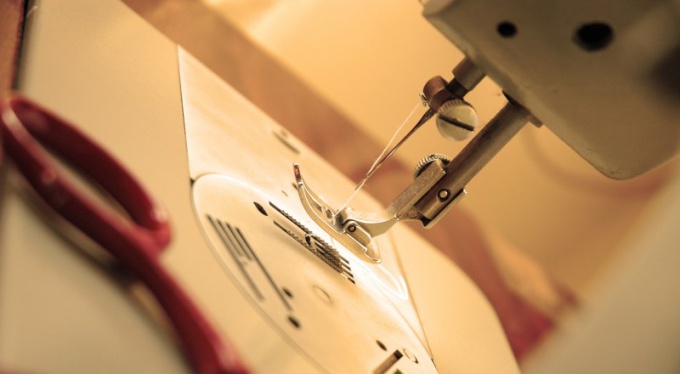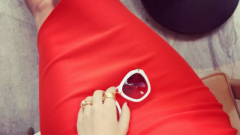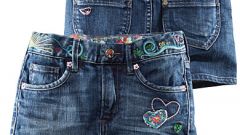You will need
- - cm tape, ruler;
- crayons, pins;
- - sewing machine, overlock machine;
- - adhesive tapes;
- - threads;
- - iron.
Instruction
1
Specify the length of the product
Wear shoes and try on a skirt in the mirror. Ask to look at ourselves and find the best option length. Make a small mark or stick pin. Remove the skirt, put it on the table and unfold. Measure the distance from the edge of the product to the mark you made when fitting. With a ruler and flat chalk mark this distance 5-7 cm across the width of the hem. Smoothly connect the dashes - this is the new bottom line.
Wear shoes and try on a skirt in the mirror. Ask to look at ourselves and find the best option length. Make a small mark or stick pin. Remove the skirt, put it on the table and unfold. Measure the distance from the edge of the product to the mark you made when fitting. With a ruler and flat chalk mark this distance 5-7 cm across the width of the hem. Smoothly connect the dashes - this is the new bottom line.
2
Leave extra fabric for hemming skirts
From the chalk line down, put 2-3 cm around the hem and do another line. It cut the fabric and treat the line of cut. To do this, use special serger or overlock stitch on your sewing machine. Lightly iron the serged edge of an iron through a damp cloth. If you slightly shorten the product, the chalk mark can be matched with decorative stitching at the hem of the skirt. In this case, the first strut position, amperite it, and then measure the desired inches. If you shorten a skirt with a slit, the first strut amperite stitching and iron the hem. Cleave the pin or staple the two parts, and then with a ruler and tailor's chalk the planned line.
From the chalk line down, put 2-3 cm around the hem and do another line. It cut the fabric and treat the line of cut. To do this, use special serger or overlock stitch on your sewing machine. Lightly iron the serged edge of an iron through a damp cloth. If you slightly shorten the product, the chalk mark can be matched with decorative stitching at the hem of the skirt. In this case, the first strut position, amperite it, and then measure the desired inches. If you shorten a skirt with a slit, the first strut amperite stitching and iron the hem. Cleave the pin or staple the two parts, and then with a ruler and tailor's chalk the planned line.
3
Gently podkalivat pins, fold the skirt on the top line. Propecia thread and otparit ACC. Now you can sew the product in a way that is more suitable to the fabric. If the skirt is made of dense matter, use
the adhesive cobweb. Put it in so that its edge coincides with the edge of the ACC. Iron the bottom of the skirt using a damp cloth with a hot iron. For warm products thick fabric is better to sew by hand, using strong thin thread. The final touch in the design of the skirt will be executing decorative stitching at the distance of 0.3-0.5 cm from the bottom.
the adhesive cobweb. Put it in so that its edge coincides with the edge of the ACC. Iron the bottom of the skirt using a damp cloth with a hot iron. For warm products thick fabric is better to sew by hand, using strong thin thread. The final touch in the design of the skirt will be executing decorative stitching at the distance of 0.3-0.5 cm from the bottom.
Note
The edges of the skirts from fine fabrics quickly crumble, so they should be treated quickly.
Useful advice
If the hem is uneven, it must first align, and then charting a new hem line.







